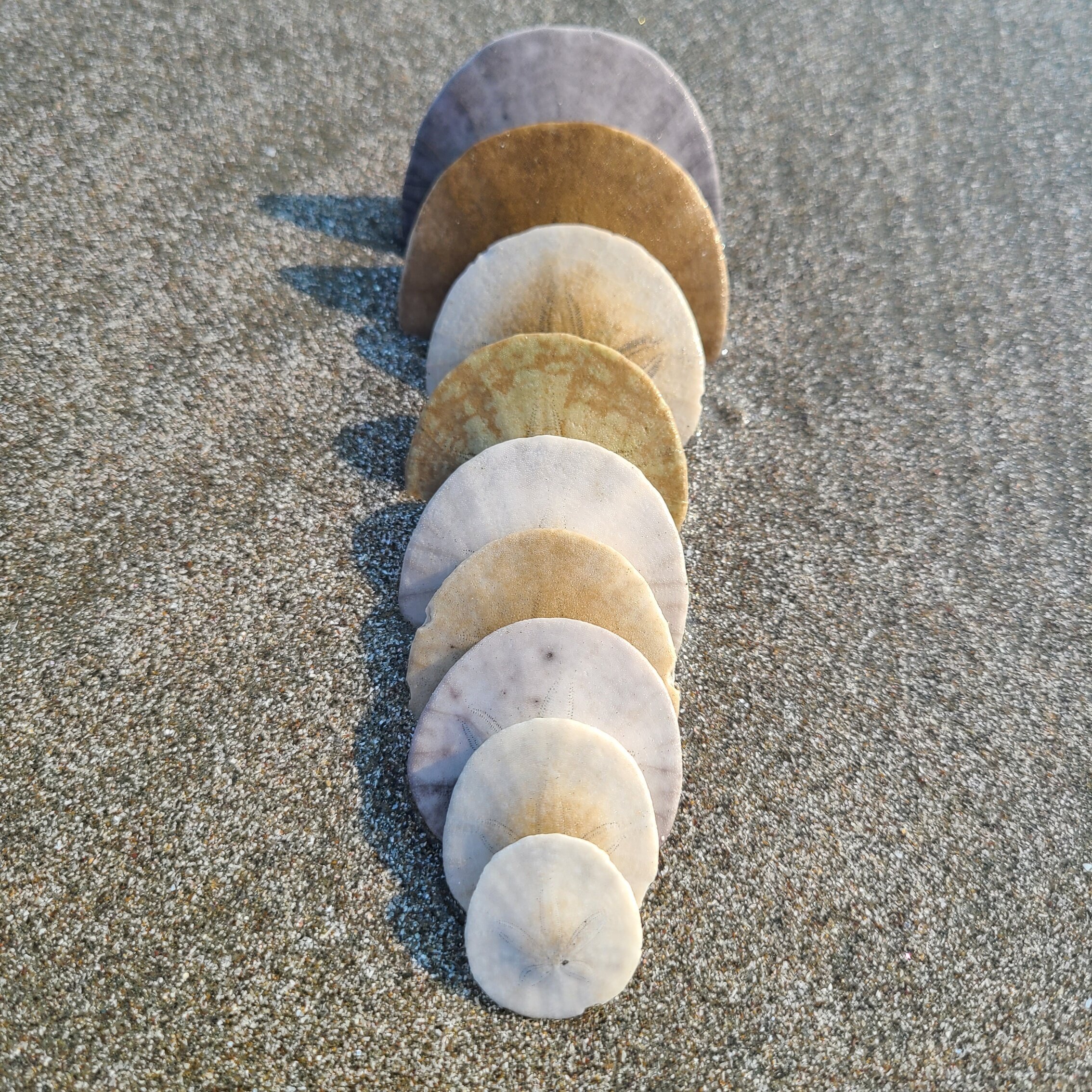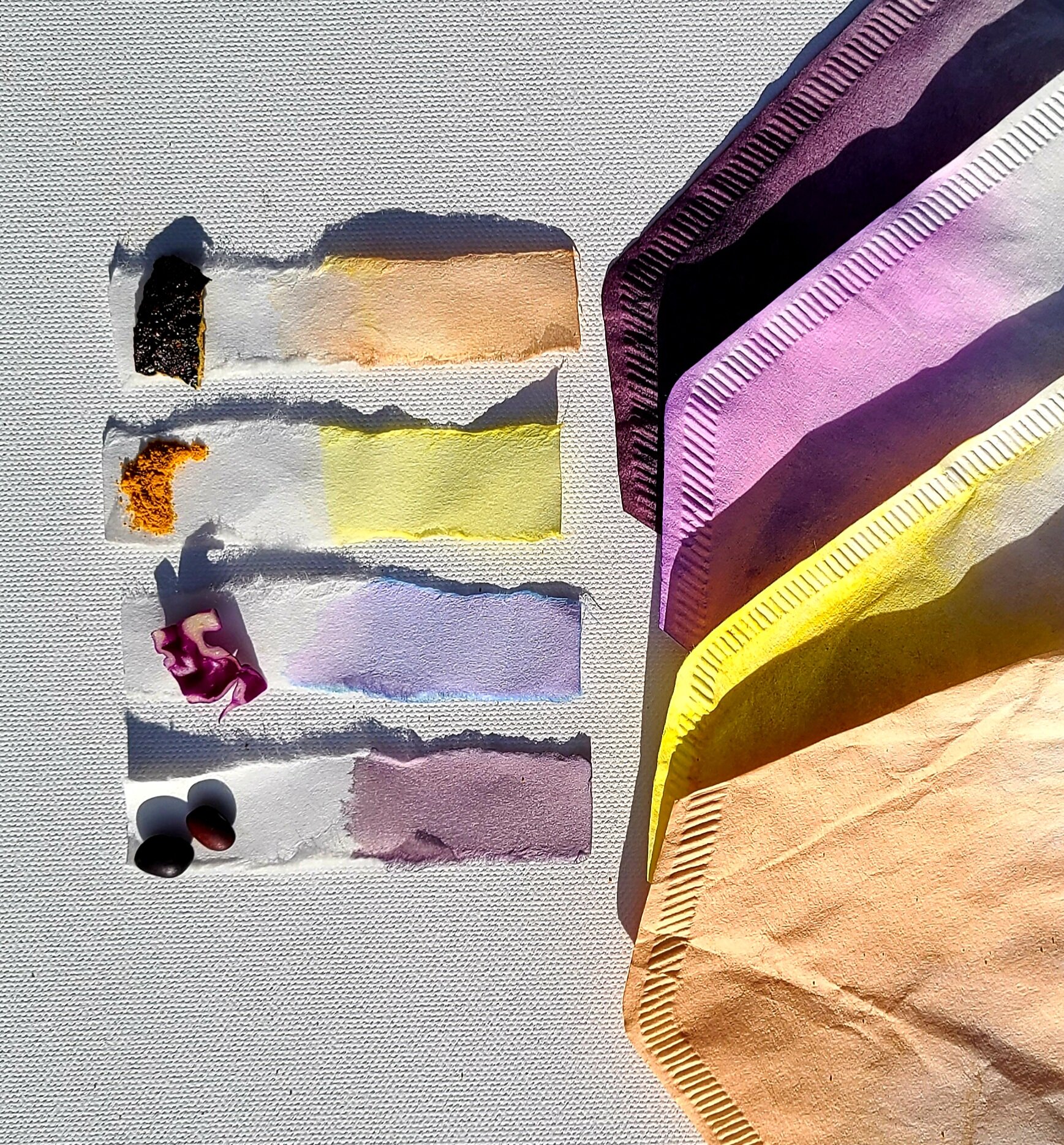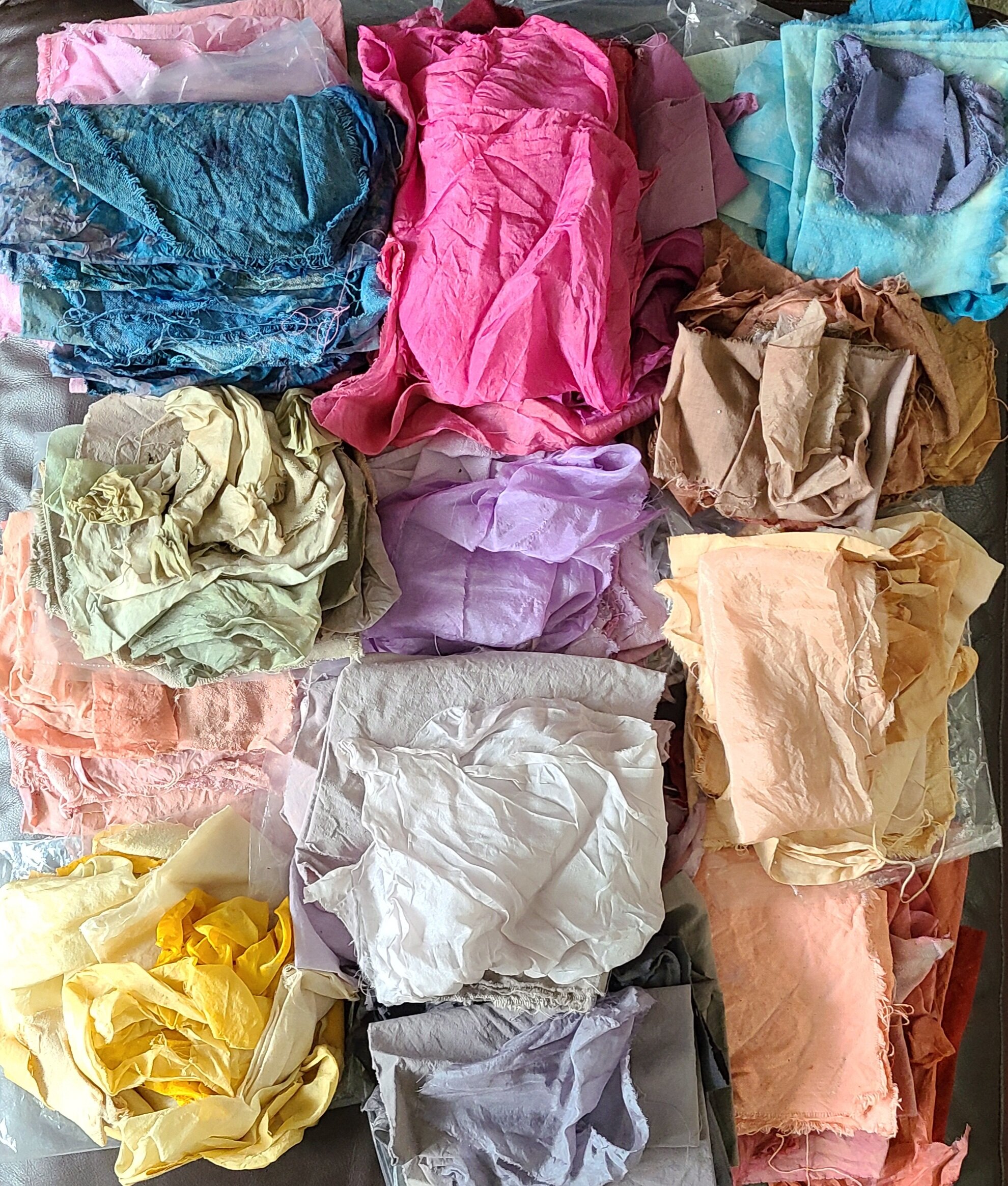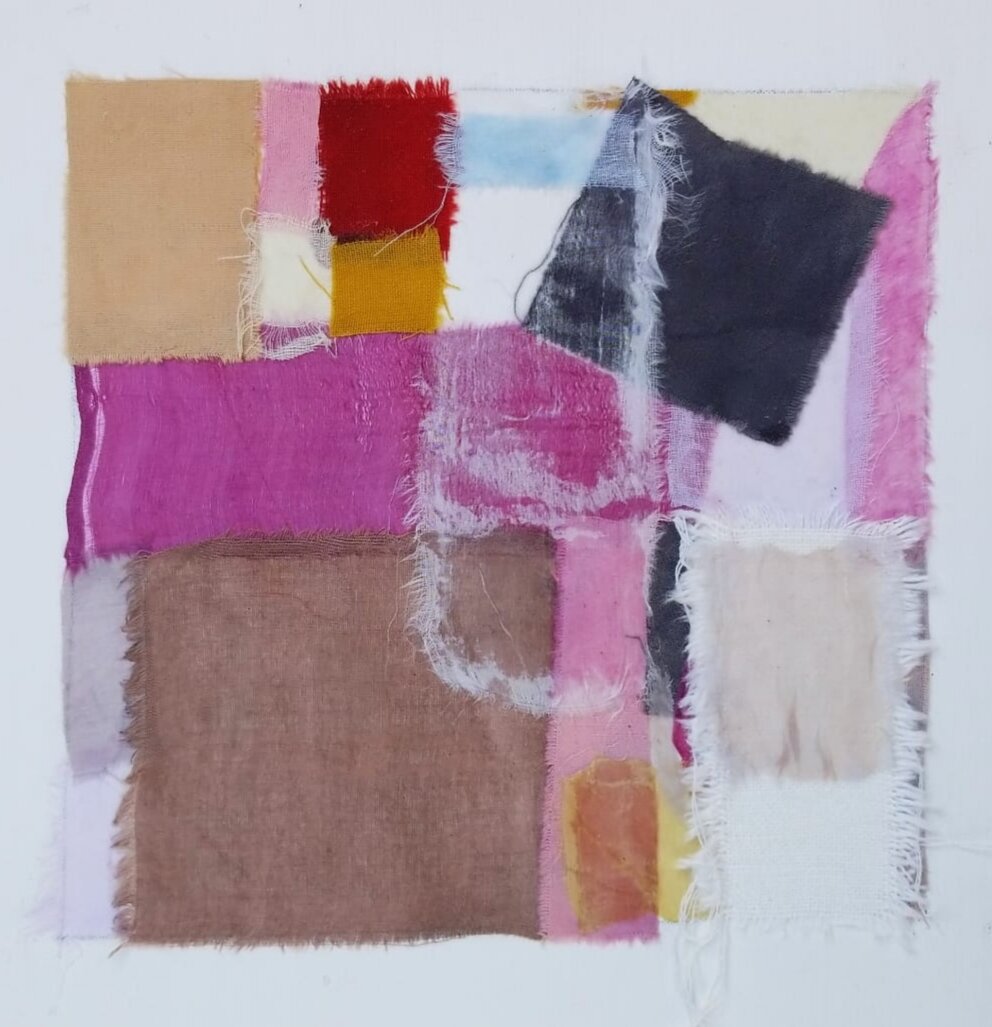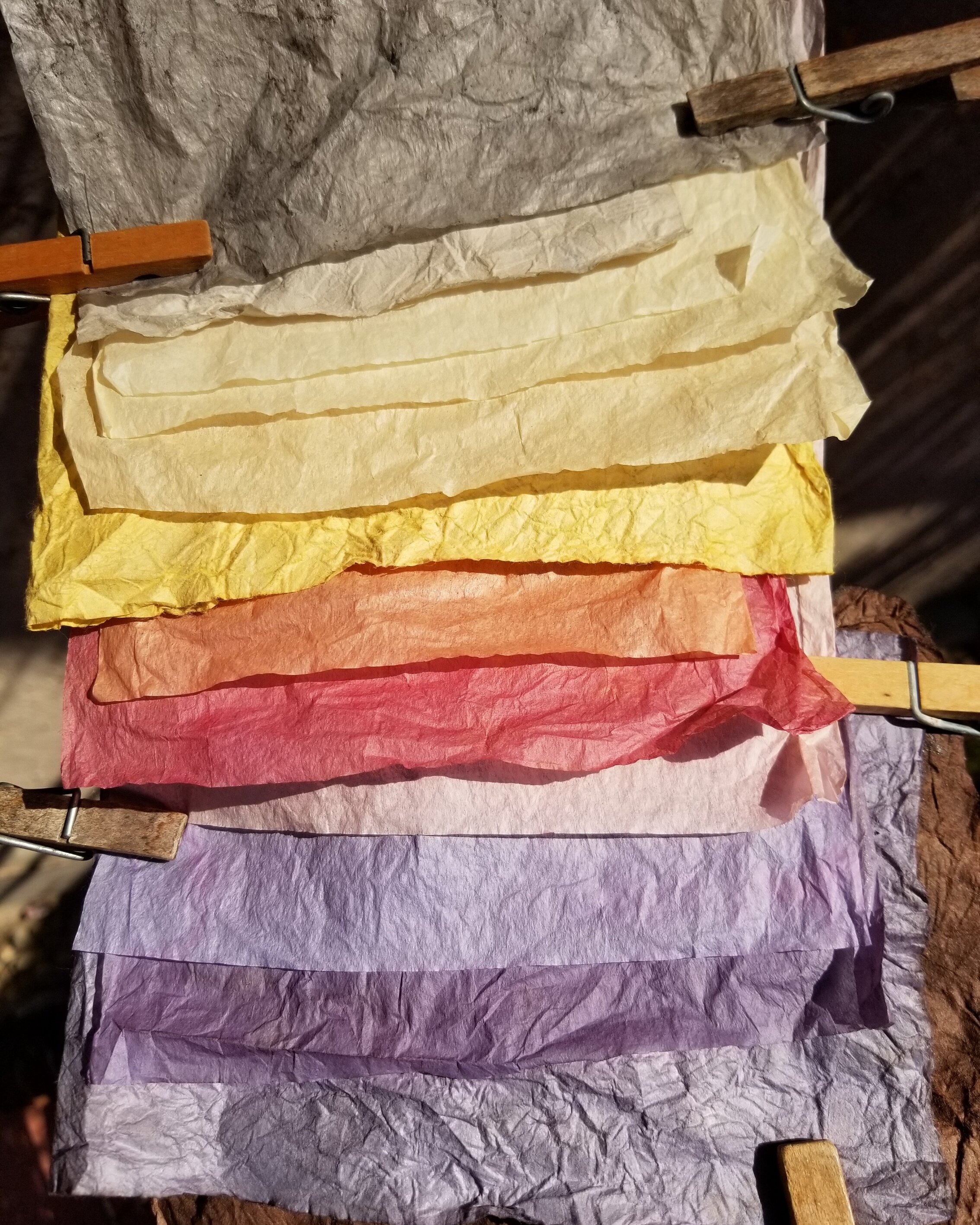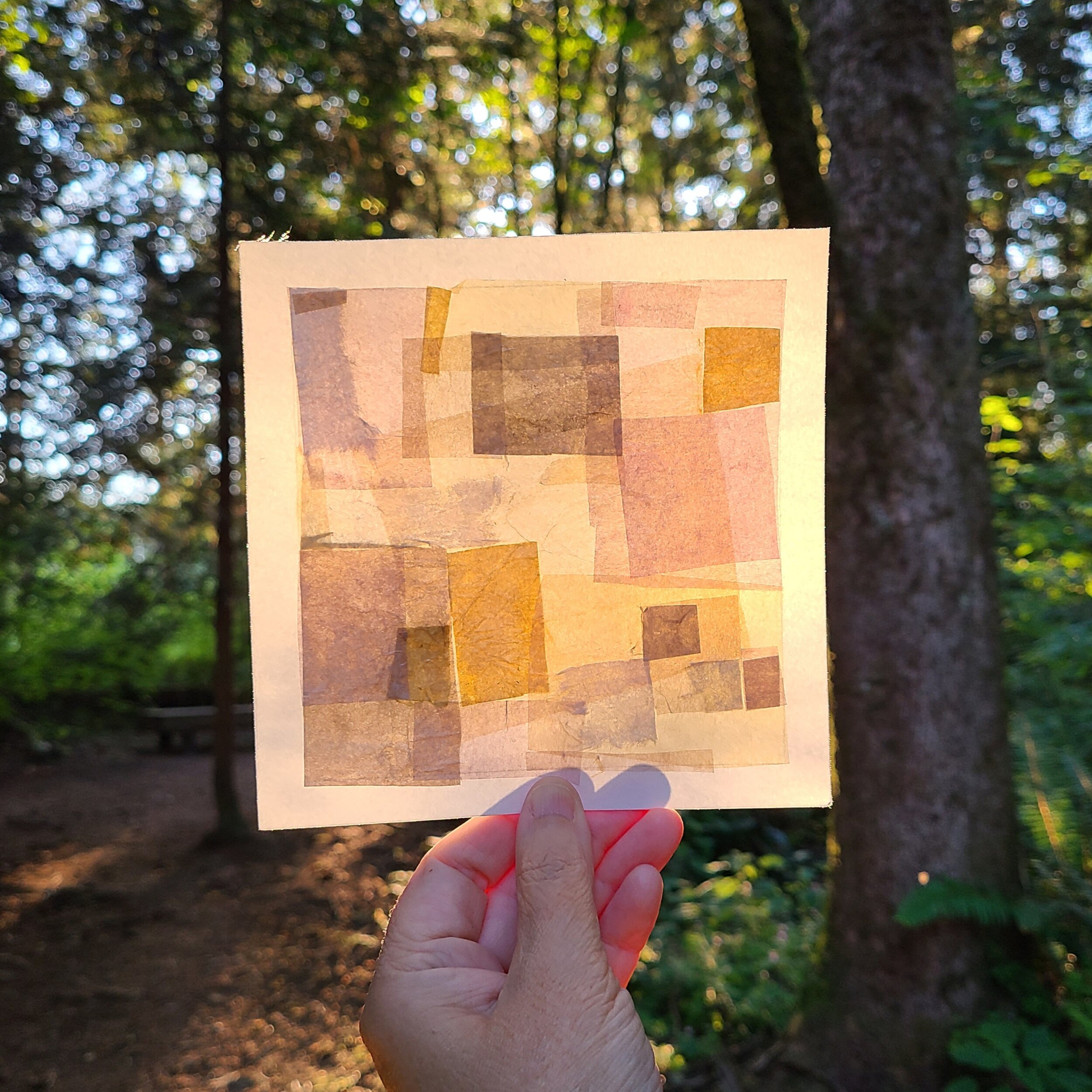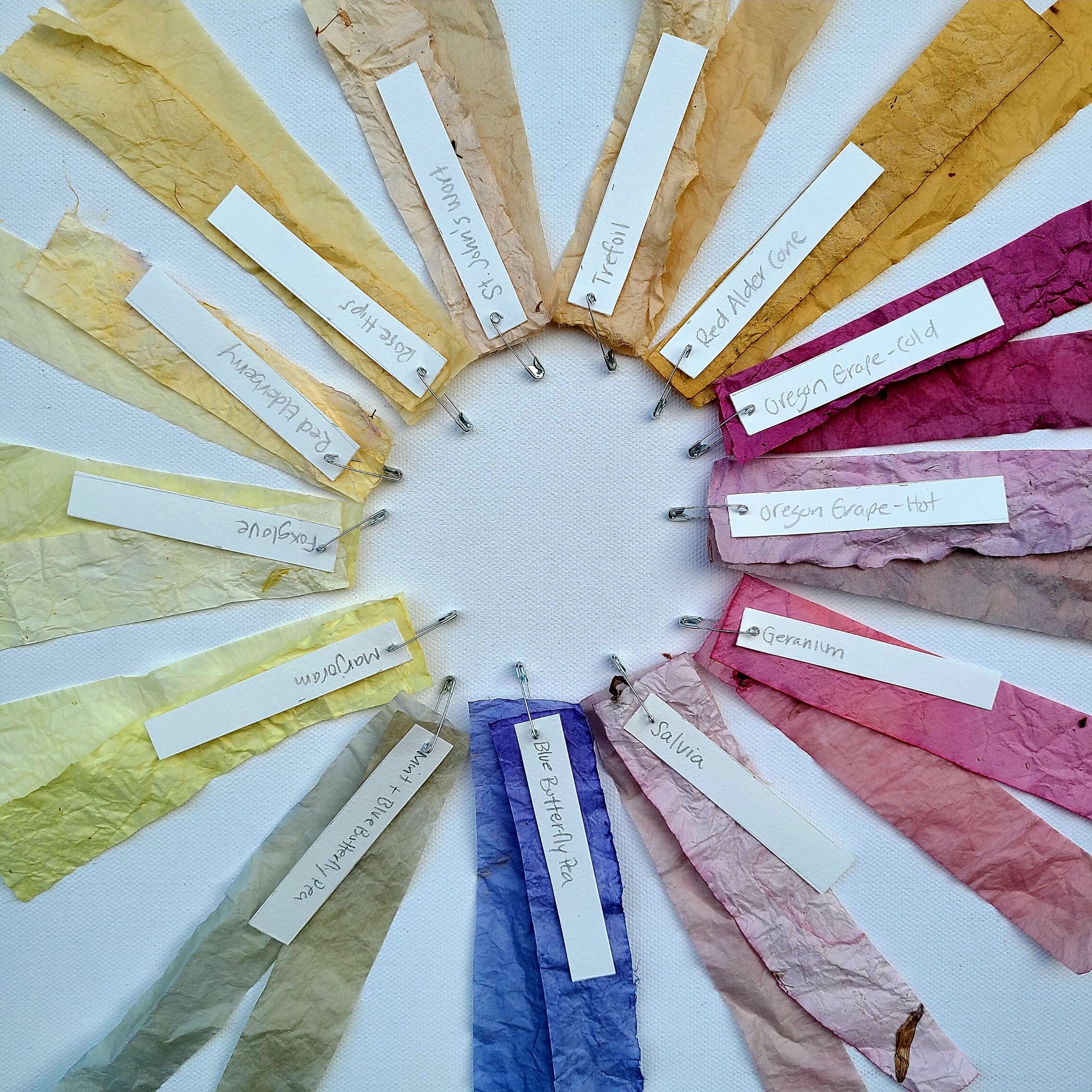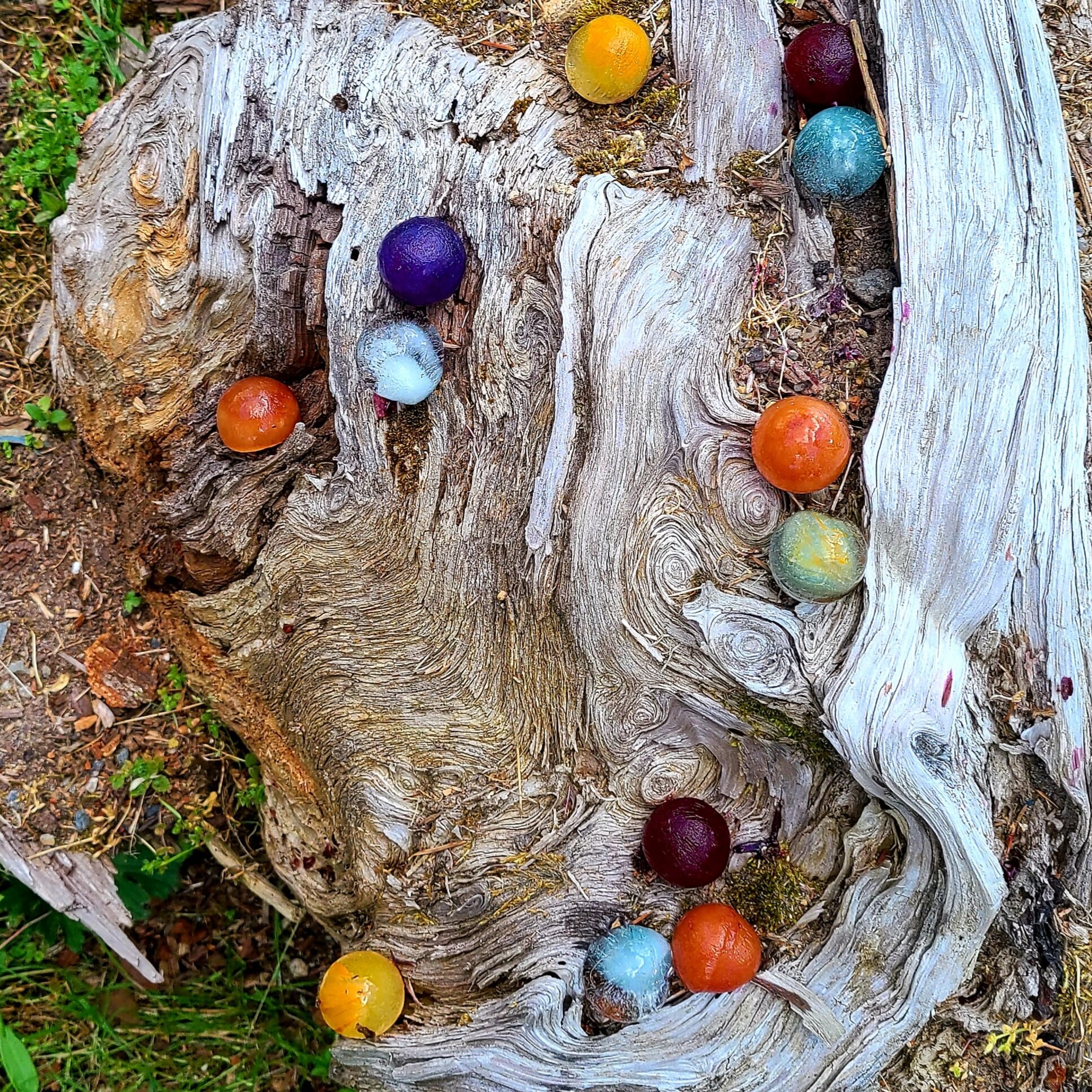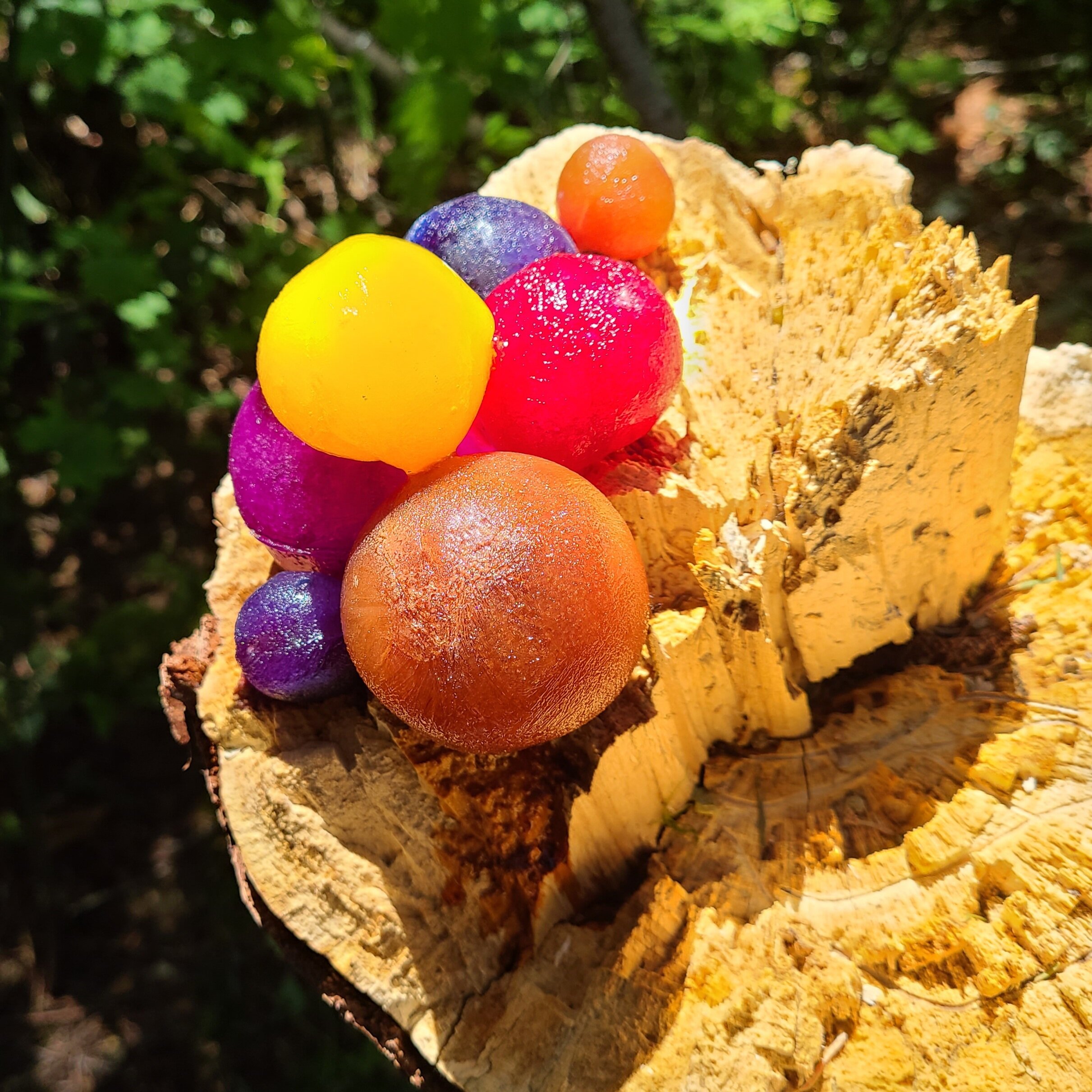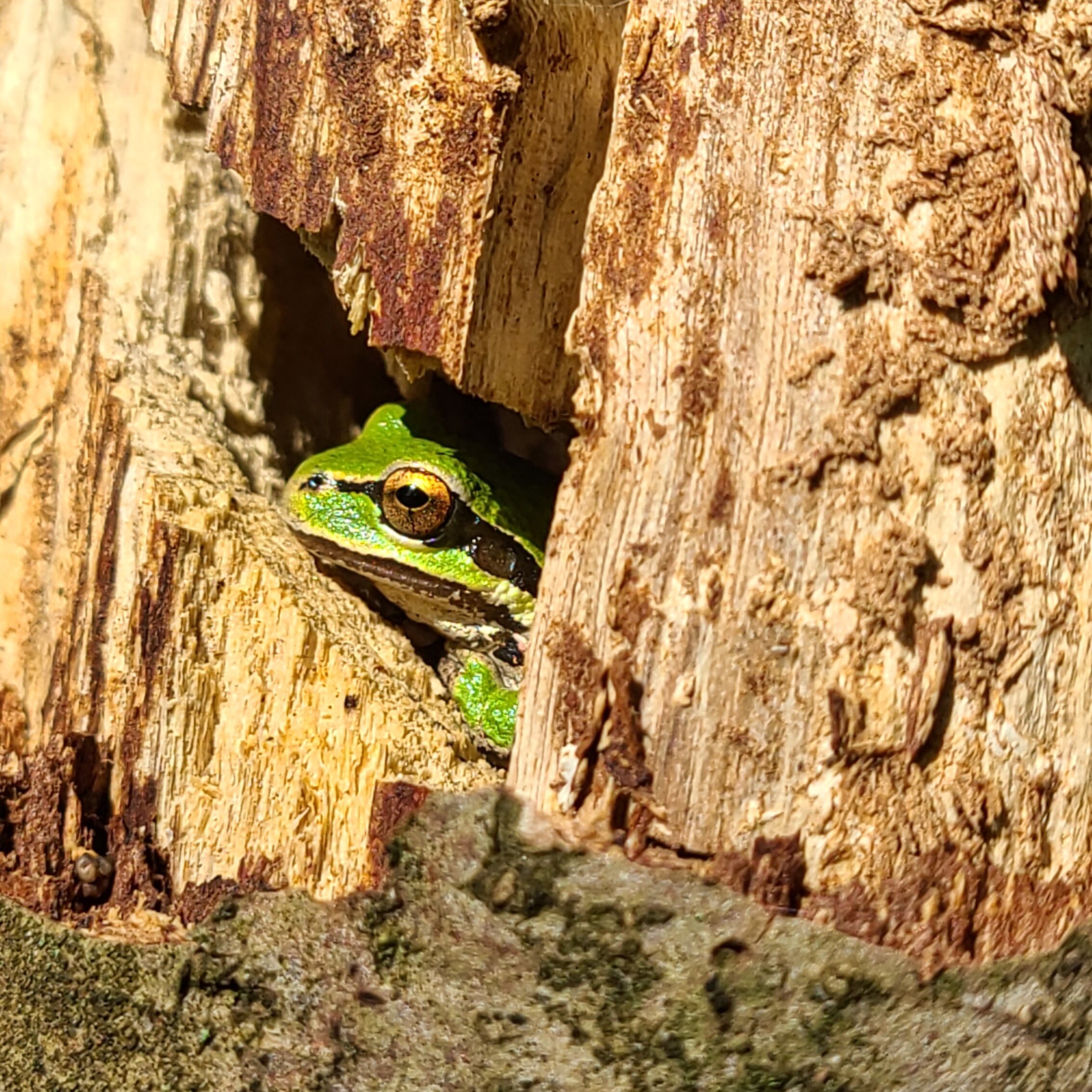Red rose petals are an organic way to create dusty pink and blush hues for your textile and craft projects. No roses in your garden, no problem! Recycling & repurposing a bouquet with roses is an amazing way to enjoy the beauty of flowers long after they have faded. This tutorial will show you how to brew color from wilting red roses, as well as how to dye paper & the resulting color swatch samples (wet strength tissue paper) with various pre-mordants.
Immersion-Dyed Roses
Faded rose petals are the perfect flower to create reds & pinks with an immersion dyeing technique for your textiles. Recycling & repurposing a bouquet of roses, or straight from your summer garden, is an amazing way to enjoy the beauty of flowers long after they have faded. This tutorial will show you how to immersion dye with rose petals on cotton using white vinegar & iron water to modify the colors.
Steam-Dyed Tulips
Tulip petals are a wonderful flower to create reds & pinks with a steam dyeing technique for your textiles, aka eco-dyeing. Recycling & repurposing a bouquet of tulips, or straight from your spring garden, is an amazing way to enjoy the beauty of flowers long after they have faded. This tutorial will show you how to steam dye with tulip petals on silk using white vinegar & iron water to modify the colors.
Dahlia Dye
Dahlia flowers are a natural way to create golden yellow hues for your textile and craft projects. If it's not the season for dahlias, no problem! Recycling & repurposing a bouquet with dahlias is an amazing way to enjoy the beauty of flowers long after they have faded. You could say it's twice as nice! This tutorial will show you how to brew dyes from wilting dahlia flowers, as well as the resulting color swatch samples (cotton & silk) with various pre-mordants.
Blue Spruce Dye
Do you have blue spruce in your neighborhood? If so, grab yourself a few boughs and chop them up in your dye pot! By adding iron water to your brew, you can coax out the bluish tint from this evergreen to create gorgeous cool grays. This tutorial will show you how to identify & brew dye from a blue spruce, shift color with iron water and the resulting color swatch samples (cotton, bamboo & silk) with various mordants.
Pine & Spruce Branch Dye
Picking up downed evergreen branches of pine & spruce trees not only cleans up your yard, but can be repurposed into some beautiful colors in your dye pot. The natural tannin in the branches will give you a beige color on textile, but with the addition of all-in-one mordant of alum & iron water, you can achieve olive greens and rich browns as well. This tutorial will show you how to brew dye from foraged pine & spruce branches and expand your palette with an all-in-one mordant technique, plus the resulting color swatch samples (cotton & silk).
Birch Bark Dye
Join me on a foraging trip (Part 2) in the beautiful mountains of Central Idaho to search for color from birch trees. Learn to identify and differentiate birch from aspen and how to ethically collect birch bark for your dye pot. The natural tannins in bark bond wonderfully with textile and create a range of beige and tan colors. After exploring the landscape of the Big Wood River in search of birch, this tutorial will show you how to brew dye with the resulting color swatch samples (cotton & silk) with various mordants. As an added bonus, you will learn how to create an all-in-one mordant within the dye itself to expand your color palette.
Pine & Spruce Cone Dye
Join me on a foraging trip (Part 1) in the beautiful mountains of Central Idaho to search for color from conifer trees. Learn to identify pine and spruce cones and how to ethically collect them for your dye pot. The tannins in cones bond wonderfully with textile and create a range of beige colors with orange and pink hues. After exploring the landscape of the Sawtooth and Boulder mountains in search of cones, this tutorial will show you how to brew dye with the resulting color swatch samples (cotton & silk) with various mordants.
Noble Fir Dye
If you love having fresh evergreen in your home for holiday decorations, keep that aroma brewing by recycling the boughs in your dye pot - needles and all! The natural tannin in the branches will give you a beige color on textile, but with an iron water shift, you can achieve deep grays as well. This tutorial will show you how to brew dye from a noble fir Christmas tree and shift color with iron water, plus the resulting color swatch samples (cotton, bamboo, linen & silk) with various mordants.
Cranberry Dye
Cranberries are a seasonal fruit that are delicious in sauce, drinks AND your dye pot! Simply simmering these vibrant berries will create a gorgeous pink color to use in your textile projects at the holidays and beyond. This tutorial will show you how to brew dye from cranberries with the resulting color swatch samples (cotton & silk) with various mordants.
Pomegranate Skin Dye & Mordant
Pomegranate seeds are a holiday treat, but don't throw away those skins! The peel is full of tannin and is a great way to pretreat your textiles, especially plant (cellulose) fibers like cotton, linen, bamboo and hemp, to create stronger color bonds with natural dyes. The 'mordant' process is an extra, but important, step to help organic color last longer and protect it from fading with exposure to light and wash. The process is as easy as simmering a pot of a water and soaking your textile for an hour. And, if you love yellow, pomegranate skins make a rich golden dye with a longer soak and some extra peels. This video tutorial will show you how to tannin mordant cellulose fibers with the skins, as well as create a long-lasting yellow color for your textiles.
Black Walnut Dye
If you are lucky enough to have a black walnut tree in your midst, you can add rich browns to your dye pot in autumn. After the hulls fall from the tree, forage them while green, or even collect them after they turn black, to create a tannin rich dye to use for coloring or a mordant. You can even make extremely dark hues with iron water that are as close to black as you will get in the natural dye world. This tutorial will show you how to brew dye from black walnut hulls on the stove, as well as a cold 'sun' tea dye from the shells. You will see the resulting color swatch samples (cotton & silk) with various mordants and the impact of shifting the color with an iron water bath.
Alum Mordant
Alum is an easy way to pretreat your textiles to create stronger color bonds with natural dyes. The 'mordant' process is an extra, but important, step to help organic color last longer and protect it from fading with exposure to light and wash. Typically found in your grocery spice aisle, alum is a mineral most often used by natural dyers on its own or in combination with other mordants such as tannin. The process is as easy as simmering a pot of a water and soaking your textile for an hour. This video tutorial will show you how to make an alum bath, as well as the use of cream of tartar for protein fibers.
Japanese Maple Leaf
Raking leaves in autumn is a perfect way to forage natural color right in your back yard. Japanese maple leaves create a pink/mauve dye for your textile and craft projects by simply chopping them up and throwing them in a pot of simmering water. Rich in tannin, the dye forms a strong bond with the textile that is long lasting and safe from light and water. This tutorial will show you how to forage and brew dye from Japanese maple leaves, as well as deepen the color with an iron water bath. You will see the resulting color swatch samples (cotton & silk) with various mordants.
Iron Water
Iron is a great way to shift your naturally dyed fiber to darker shades quickly and easily. Make your own homemade iron water with 3 simple ingredients: rusty nails, white vinegar and water. After a few weeks, your iron water is ready to go! You only need a splash, so store it away to use any time you are looking for darker shades including gray and black. This video tutorial will show you how to make and use iron water, as well as the resulting color swatch samples of 6 different natural dyes on cotton.
Cold pH Shift
You've seen how to shift the color of red cabbage in your dye pot from purple to pink & green, but did you know you can cold shift too? Grab red cabbage dye you already have stored and play around with the pH to see what different colors you can make. Temperature can also play a factor in the colors you achieve with natural dye. This video tutorial will show you how to quickly color shift your red cabbage dye with vinegar, lemon juice and baking soda, as well as the resulting color swatch samples (silk).
Color Quest
Welcome to my new YouTube channel, Margaret Byrd:Color Quest as I move my Trail Tales blog to a vlog! Every Friday, I release new video content focused on the amazing world of natural color. Join me as I explore ways to forage and invite organic color into my creative practice.
Creative Currency
Whole numbers
I am now rich with sand dollars. Not the broken shells typically found in my childhood beach hunts, but perfectly whole specimens of this sea urchin treasure.
Seriously – we are talking the mother lode of sand dollars.
Never have I seen such a gorgeous array of sizes and colors of whole sand dollars washed up on the beach, Cayucos, California, September 2020.
So, what does an artist do with so much natural wealth?
Simple – leave it behind in exchange for creative inspiration that only the coast can generously offer.
Welcome to California’s Central Coast!
Bank holiday
My latest journey to visit my daughters living in San Luis Obispo filled my pockets up in more ways than one.
Christmas was the last time I saw my oldest daughter, Devon, and the pandemic had cancelled a springtime trip to play on the beach with all four of us together.
So, two weeks relaxing oceanside with my kids this past month was a true gift.
Hiking Harmony Headlands with my kids, Zsofi, Devon and Mason, August 2020. So much fun!
Exploring the sea cliffs at Montaña de Oro and Harmony Headlands state parks, watching my girls surf at Dog Beach and Moonstone, and catching some pretty sweet sunsets brought some big smiles.
Devon living the surfer’s life on Dog Beach in Cayucos, California, September 2020.
Zsofi shredding it on a foggy day at Moonstone Beach, Cambria, California, August 2020.
It also brought me the opportunity to connect more deeply with my surroundings by leaving small installation offerings as an ephemeral payment of gratitude.
Thank you, Central Coast.
Frozen assets
To tender ice as an artistic medium on a windy beach is exciting stuff.
Finding the perfect spot to create a brief visual experience involves sand, stone and surf. And, as you might imagine, not all places freely accept my form of creative currency.
You have to place a lot of ice to get a lucky shot, and luckily, the failures melt fast! Moonstone Beach, Cambria, California, September 2020.
But, failed attempts are all part of the trek, and without the stagger there can be no sparkle.
Ice installation is a true balancing act of patience and persistence. Cayucos Beach, California, August 2020.
All of the rejected installations are rewarded with laughter and lessons of letting go - critical elements of building a balanced artistic practice.
Bag of sand
Two beaches that are especially generous in their inspirational exchange along the Central Coast are the pebbly Moonstone and the long sandy strand stretching from Morro Bay to Cayucos. Although waves crash against both to sculpt the tideline, there are unique features at each one that draw me in time and time again.
MOONSTONE
Say hello to a rock hound’s paradise of agates, jade and jasper. Every visit I make to the area requires a few hours simply sifting through the stones. So, leaving a small ice installation to mimic the colors of the tumbled rocks felt perfectly placed.
Blue butterfly pea, hibiscus, spirulina and turmeric created beautifully vibrant ice sticks to complement the colorful stones on Moonstone Beach, Cambria, California, September 2020.
Ice orbs mixing with the salty spray of Moonstone Beach honeycomb rocks, Cambria, California, September 2020.
The wind whipped hard on the beach that day, adding to the expressive challenges, but my incredible kids stuck by my side (behind a driftwood shield!) so their free-spirited mom could artfully play.
Love you guys!
CAYUCOS
While this beach charmed me with its trove of whole sand dollars, it was the long, slow tide and larger rock outcrops that inspired my icy installations.
The proximity to our house made it an especially great space to experiment with frozen shapes across several days and in different light.
As the tide stretched in and out, tidal pools exposed vibrant sea anemones and their starfish friends.
The neon glow of the sea anemone at low tide was breathtaking, Cayucos Beach, California, September 2020.
The variation of barnacle formations and mussels on the exposed rocks created intriguing complements to the melting blue cylinders of ice.
Perhaps the most compelling geological feature was a sea stack that brought back memories of an installation adventure in Lofoten, Norway in 2018.
Granite Stack ice installation in Lofoten, Norway is one of my very favorite shots, October 2018.
I made several attempts to capture the essence of Granite Stack, and was treated to a special image in exchange for hours quietly washed away by the California tide.
Mussel Stack ice installation in honor of Granite Stack, Cayucos Beach, California, September 2020.
Stack ‘em deep
Seems that my creative reserves have been happily refilled by my time on the Central Coast, and for that I’m thankful.
The rush of excitement I felt by collecting fistfuls of sand dollars was immediately followed by a natural impulse to interact with their subtle beauty.
Sorting, stacking and releasing them back to the sea is somehow intertwined with the curiosity that drives my installation practice.
How comforting to know I can bank on this coastal inspiration forever.
The Art of Craft
Small craft advisory
As an artist, I aspire to be crafty.
Forget the misguided, and tragically oppressive Western narrative of ‘high art’ as somehow ‘enlightened’ and more valuable than the exquisite beauty found across all creative expression labeled as ‘craft’.
If you can translate an idea from mind to hand, the material is immaterial – you are an artist - plain and simple.
My creative curiosity has led me down a crafty path or two, and I’m now enamored with one diversion so often associated with handiwork: natural dyeing.
Some of my kitchen favorites for natural dye: avocado, turmeric, red cabbage and black bean.
While I could fight against the notion that this diminishes the value of my art, why would I entertain such a silly thought?
Nope. I choose to celebrate, my artist friends, so let’s get crafting with natural color!
Color classics
Focusing on colors from nature in #The100DayProject has filled my fridge with an incredible rainbow of botanical dyes.
Dyes brewed from foraged plants and food scraps during #The100DayProject.
Every time I find a new plant to brew, I add to my collection. When I see a color missing, I go searching for a plant. It is a never-ending exploratory cycle.
10 dye plants foraged from Tambark Park and my garden waste to study local flora colors.
As I shared my project, and the art I created with these dyes, I could hear the buzz all around me as people became curious themselves. Certainly interested, and maybe even inspired, to learn about natural dyes.
I get this. I have a history of being intrigued myself. It’s how this passion for organic color grew and how I learned what I know so far. Ironically, it seems the more you know, the more you want to know.
Having had many of the same questions when I started my love affair with nature’s palette in 2017, I have been searching high and low for answers ever since.
When I learned from a Dutch artist that seaweed was a sustainable source of dye, I headed to Iceland to investigate.
And, because sharing is caring, I’m very excited to tell you a secret I’ve been keeping all to myself:
Starting in August 2020, I will be releasing short tutorial videos and mini-courses all about the incredible world of natural color. My intention is to build a place where you can easily find the basics to get you inspired to add color to your life naturally.
Soon to be released YouTube channel, Cookin’ Color, with short video tutorials on organic dyes, August 2020.
The topic is HUGE. There are so many options and different approaches to extracting color, plus a multitude of ways to use it.
For me, organic color has been an integral part of my installation practice, and more recently my mixed media work. But a beautiful aspect of natural color is that it is available to everyone, no matter where you consider yourself on the art/craft spectrum.
Bioplastics cooked and cured with natural dyes in my kitchen studio in June 2020.
And, the botanical dye in my fridge right now is a perfect example of the countless ways we can weave natural color into almost everything.
Nature’s bounty
Finding a way to create color in an ephemeral installation without hurting an environment is how I got hooked on natural dyes. But as my #100DaysOfNaturesColors meandered its way through botanical dyes and earth pigments, I could clearly see just how many different ways I have been exploring color from nature. Maybe one or more of these will strike a creative chord with you too!
TEXTILE
Probably the most obvious and popular use of natural dyes is to create sumptuous hues for fabric. With a growing interest of sustainability in fashion, botanical colors are popping up from head to toe. If you’ve got natural fibers in your closet (cotton, hemp, silk, wool), you can dye organically – the options are endless.
Textiles of wool, silk, cotton and bamboo hand-dyed in Oaxaca exclusively with organic matter.
My first on-line workshop will be on how to create an ombre-dyed scarf from foods in your kitchen, and this fall, I will be teaching a similar technique using earth pigments. Incorporating these rich colors into a wardrobe is a delicious way to get your art out of the house.
However, if knitting or weaving is more your speed, soaking yarn, string or ribbon in a batch of botanicals can create subtle sweetness. Just look at the wonder of this wool I dyed in Mexico.
Wood hand-dyed in organic matter including indigo, muicle, pericon and cochineal in Oaxaca, Mexico.
While I preferred to use this fiber for installation, imagine a hat, scarf, mittens or sweater with that special colorful touch?
But who says you have to wear hand-dyed textiles? My mom was an avid quilter which I’m certain has influenced my mixed media textile pieces and love of squares.
Naturally dyed textile piece, Blossom, created while on residency in Oaxaca, Mexico, March 2020.
How special it would have been to forage with my mom and organically dye fabric swatches for her to sew into her quilt creations. Keep that in mind for the quilters in your life.
PAPER
Textile’s extended fiber family is paper. The delicate translucency of paper has intrigued me for quite some time, both for sculptural and 2D applications. In Oaxaca, I first tested how wet strength fibers like mulberry and tissue would hold the colors I had brewed, and it worked like a charm.
First time hand-dyeing paper with plant matter in Oaxaca, Mexico, March 2020.
So, one chunk of 10 days during #The100DayProject, I focused on creating collage with these dyed papers. The variations of color, especially when layering, felt closely tied to the depth I love to create with overlays of silk in my textile pieces.
Hand-dyed paper collage backlit in Tambark Park, made exclusively from organic dyes foraged in Oaxaca, Mexico.
Feeling inspired, I foraged local ‘weeds’ in my beloved Tambark Park the last 10 days of the project and made a new rainbow stock of colorful paper from the PNW.
Paper samples of natural dyes brewed from foraged plants in my neighborhood. Only blue butterfly pea was from my kitchen!
What’s wonderful about paper is its versatility across several art disciplines, and a true staple in many craft projects. Why not make hand-dyed paper with plants foraged from your neighborhood the next time the scissors and glue need some exercise?
INK
Dyeing paper is one way to spread some of nature’s colors around, but making ink turns just about any organic matter into a medium for drawing and watercolor fun.
I simply poured the dyes I brewed from foraged plants in Iceland and Mexico on paper, but learning how to make ink specifically was yet another way to expand my natural color wheel during the last 100 days.
Testing inks made from avocado skin and red cabbage during #The100DayProject.
I even made blue ink with my cherished blue butterfly pea blossoms for the first time, one of the most elusive colors of nature.
Watch out - lake pigments might be just around the next corner!
KITCHEN KRAFT
While all of the above may result in time at a craft table, a stovetop is still a critical element in a studio of natural dyes. Therefore, it’s no surprise that crafts of the kitchen can also add a splash of organic color.
Much of my installation work was born in the kitchen - infused ice, mung bean and playdough have been some of my edible shining stars.
Mung bean string installation naturally dyed with kitchen scraps in Sayulita, Mexico, December 2018.
Brewing organic dyes as natural food coloring for baking, cooking and blended drinks is certainly a fun way to add color in the kitchen. At the very least, you can start with next year’s Easter eggs having that natural color vibe.
This year’s Easter Eggs were dyed au naturel in turmeric, red beet, red cabbage, avocado and blue butterfly pea.
Plus, the kitchen is the perfect place to start playing with natural dyes in general. So many fruits/veggies, spices and even food scraps can make wonderful colors with very simple recipes.
In case you missed it this spring, download a copy of my Cookin’ Color brew booklet with a few of my favorite kitchen dye recipes, or better yet, sign up here for my 5 Days of Dye short video tutorial series releasing soon in a kitchen near you!
HEADING
Go ahead – call me crafty. I don’t mind at all.
To be honest, I question why any negative association became attached to a word that honors the vision and skill it takes to create beauty with your hands. To be an accomplished craftsperson is a lofty goal for any artist, and certainly one I aim for in my daily practice.
So, let’s keep spreading the art of craft in the world today!
The Tambark Ten
Frozen
The itch to travel runs deep in my veins. Funny enough, I’m also strangely content to hole up in my home for long stretches of time. Perhaps the balance for me is having an alternating pulse of movement and stillness.
With travel at a standstill, walking has become my movement of choice this spring, and as luck would have it, a small forested land sits opposite my house – Tambark Park. Daily excursions into the lush greenery spurred inspiration that translated into a surprisingly abundant creative surge starring two of my art darlings: ice and installation.
Shot glass ice installations popping up all over the place!
Boy, have I missed you two!
100 steps
Heading into the fourth 10-day chapter in #The100DayProject, I committed to placing installation right outside my front door. Until now, I had connected my installation practice solely to the exploration of distant lands – a way for me to personally interact with a landscape that provided wonder and inspiration.
One of many ice installations inspired by the breathtaking beauty of Iceland, December 2017.
You don’t have to go far in the PNW to have this sensory experience of marvel. Slowing down and opening up to my local surroundings brought me simple joy, loads of chuckles and some pretty sweet photos.
Organic dyes of avocado, turmeric and red cabbage melting in all their glory.
Let’s meander through these 10 days together.
Spark
Full disclosure - I stole the idea to place installation in Tambark Park.
As the world shut down in March, a beautiful trend of leaving small gifts of love and hope emerged. Walking the trails, I started noticing flowering plants that were not indigenous to the undergrowth.
Did forest elves plant these colorful treats amongst the cedars?
It took the brightly colored blooms at the base of several looming evergreens to notice a pattern: Someone was planting these in the darkest corners of the forest to offer light.
Another sweet offering scattered across the property were colorfully painted rocks. Spying the hidden stones became a visual treasure hunt I looked forward to playing every day.
Some of the painted treasures even had messages of hope.
These acts of kindness poked at my creativity, and so bloomed 10 days of installation.
Icy roads
Colors from nature first appeared in my art as a non-toxic way to tint the ice pieces I placed in Iceland in 2017 – the launching point for my installation practice.
Winter sunset through blue butterfly pea and red cabbage in the Westfjords of Iceland, December 2017.
Frozen climates eventually graduated to balmy locations to push the limits of ice as an ephemeral medium.
From tiny rental refrigerators to mobile coolers meant for chilling wine and travel snacks, I froze all kinds of shapes and sizes of water infused with plant-based organic dyes I brewed. I took some crazy pride in the lengths I went to transport my frozen works of art to their installation destination.
The ice cooler is a must-have on installation road trips, Maui June 2018.
Ice was an obvious choice for Tambark Park to stay true to my project of #100DaysOfNaturalColor. And to be honest, I never had it so easy! Using my full-sized freezer, packing a thermal lunch bag and walking no more than 10 minutes to place installation was an absolute dream.
The beauty of ombre dyes frozen in a full size freezer is pure magic.
Note to self: it doesn’t always have to be so difficult!
Secret garden
Tambark Park has a network of trails that meander through a mixed woodland. The search for more pristine locations, however, had me traipsing off the beaten path where I found some amazing nooks and crannies in the greenery.
Ice stack placed where few have ventured except for fallen trees.
I may have been only 20 feet from the footpath I walked every day, but it transported me back to the days of my childhood where we spent muggy summer days hunting for hidden places in the brush to build forts and play hide-n-seek.
Bumping into fellow hikers in Tambark Park while reemerging from the secret spaces always garnered a curious look and sometimes even a smile.
The green light
Blazing my way through the thicket meant I stumbled into some of the PNW iconic vegetation: erupting ferns, fuzzy tufts of moss, horsetail reed and skunk cabbage. Such variations of green allowed for creative play that produced a visual tension with the vivid colors of the frozen botanical dyes.
A colorful shoot of ice in the midst of fern fronds.
The woody stumps of fallen trees provided sumptuous textures in a wonderfully neutral palette that also allowed the ice to shine.
Ice marbles wedged into weathered wood.
Possibly the second most exciting discovery was bumping into stinging nettles. Yes, they left their painful mark on my hand, but without this accidental collision, I would not have been able to identify this weedy herb.
The stinging nettle that bit me during installation will be a welcome addition to my dye pot.
Soon I will head back to collect the leaves because they make the most incredible gray-green dye, a color not easy to find in nature ironically.
Creature comfort
And what would the flora be without the fauna? Hiding among all of this incredible foliage, I was treated to chance encounters with all kinds of animals:
Rabbits flourish here and spring is the time of baby bunnies.
One lone squirrel would rustle in the trees in the same spot almost every day
A bat swooshed just above my head on a twilight installation.
Even a snake slithered its way across my path!
But, the ultimate treat, and yes, THE MOST exciting discovery was a tiny friend who joined me on the very first installation.
The first ice installation in Tambark Park had an unexpected spectator (see below photo).
Thanks to patiently waiting for the streams of sunlight to hit just the right spot, I was lucky enough to catch a glimpse, and a photo, of this sweet tree frog.
The tree frog who sat quietly for more than an hour while I placed ice and returned to its melted remains.
She didn’t dash away, and even when I returned an hour later to check on the ice melt, she was still cozy in her hole, taking in the afternoon rays.
Ice flow
Where there are frogs, there is water, and Tambark Park has a lowland marshy vibe trickling everywhere. Many a day was spent mucking through spongey ground to install, but I also examined how a stream’s gentle current would dance with my ice pieces.
Mother’s Day ice installation in honor of my mom, Maia, who passed away May 31, 2019.
I’ve played with kinetic energy in my installation work, and certainly the simple act of melting is an inherent trait of mobility in ice.
However, running water provided many more layers of movement to explore: Releasing, floating, bobbing, flowing, dissolving, and ultimately, disappearing.
Frozen floats of organic dyes in Tambark Creek gone within minutes of placing this installation.
Movement, in fact, may be implicit in the ephemeral – an idea I am just now realizing.
Micro-living
Ten tiny days of micro-travel has had a macro-impact on a deeper understanding of my creative practice. Slowing down to open the senses to my immediate surroundings has brought wide open space for reflection. Yet again, I’m reminded that movement can be a collective effort of small steps, as long as I actively nurture its momentum.
